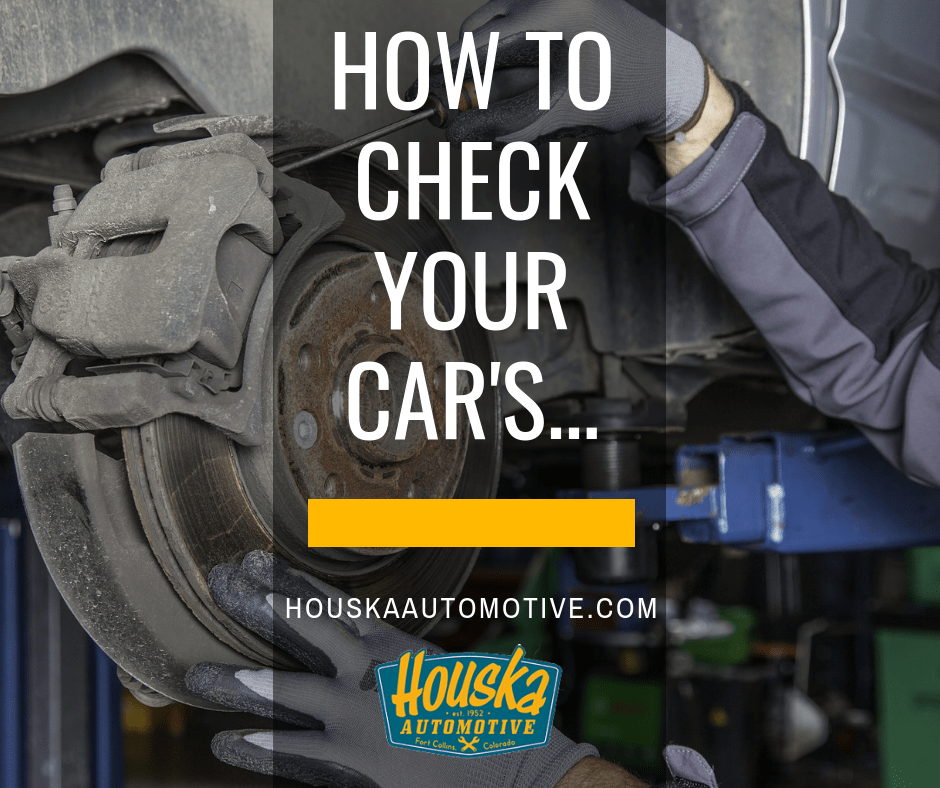Think of your car like a child – most of the time they run pretty smoothly, but it’s always a good idea to check them out every now and then to make sure all the nuts and bolts are still functioning properly. It’s always easier to fix a problem as soon as it occurs, rather than wait until it’s too late and more issues arise, so here are a few simple checks you can do at home.
Brake Pads
The nice part about brake pads is that they give you a clear indicator when they have worn down. A few signs they need to be changed include:
- You hear a metal-on-metal scraping sound when you brake
- Look through the wheel at the brake pad’s thickness. If it is less than ¼ inch thick, it should be replaced.
- You notice a vibrating feeling when you brake
Tire Pressure
Tires will naturally lose some air over an extended period of time, so it’s good to add more when they get low. If you notice a tire losing air more rapidly than others, you may have a leak and should get it inspected. Monitor your tire’s pressure by following these steps:
- Wait at least two hours after running your vehicle before checking the tire pressure
- Refer to your owner’s manual to determine the appropriate tire pressure
- Remove the valve cap from your tires. Place a pressure gauge on the stem hard enough so there is no hissing sound. Write down the reading from your gauge.
Oil
Checking the engine oil is quick and easy, but any abnormalities could indicate serious issues. Perform a quick check and identify issues by following these steps:
- Remove the oil dipstick, wipe it off completely, and reinsert it.
- Pull it back out and see where the oil is on the stick. The dipstick will have hash marks signifying proper levels.
- If the oil is black or brown, you’re in the clear. If it is a light or milky shade, this could mean that coolant is leaking into the engine. Take it in immediately if anything looks out of the ordinary.
Thermostat
The thermostat regulates the flow of coolant to your vehicle’s engine, ensuring it doesn’t overheat. Check to make sure it’s working correctly using these steps:
- Allow your vehicle to cool for a few hours.
- Remove the radiator cap and check the coolant flow by starting the engine and letting it idle. Look through the radiator filler neck, and if the coolant is flowing, this means the thermostat valve is open.
- This is a good indicator that your thermostat needs to be replaced.
And remember, no matter the car issue, our expert mechanics at Houska can help you out! Give us a call at 970-482-0156 to make an appointment or ask any questions today.

